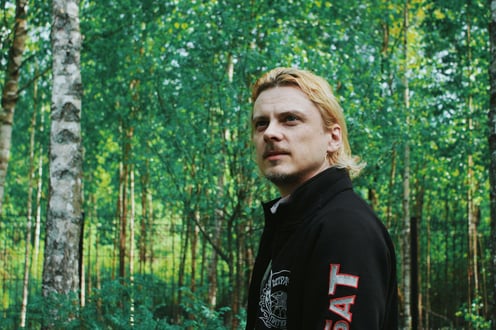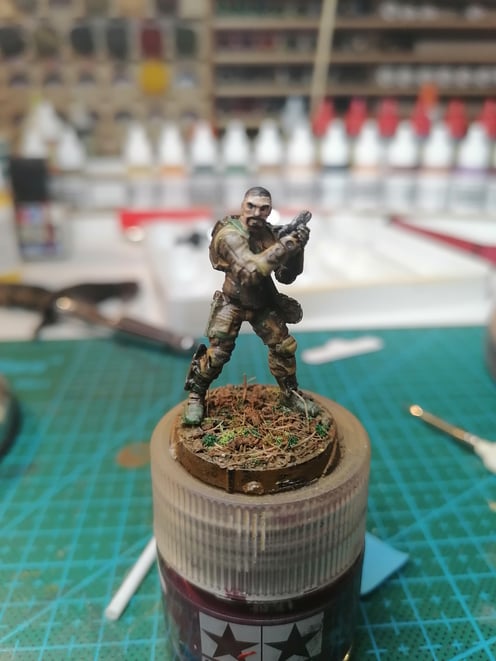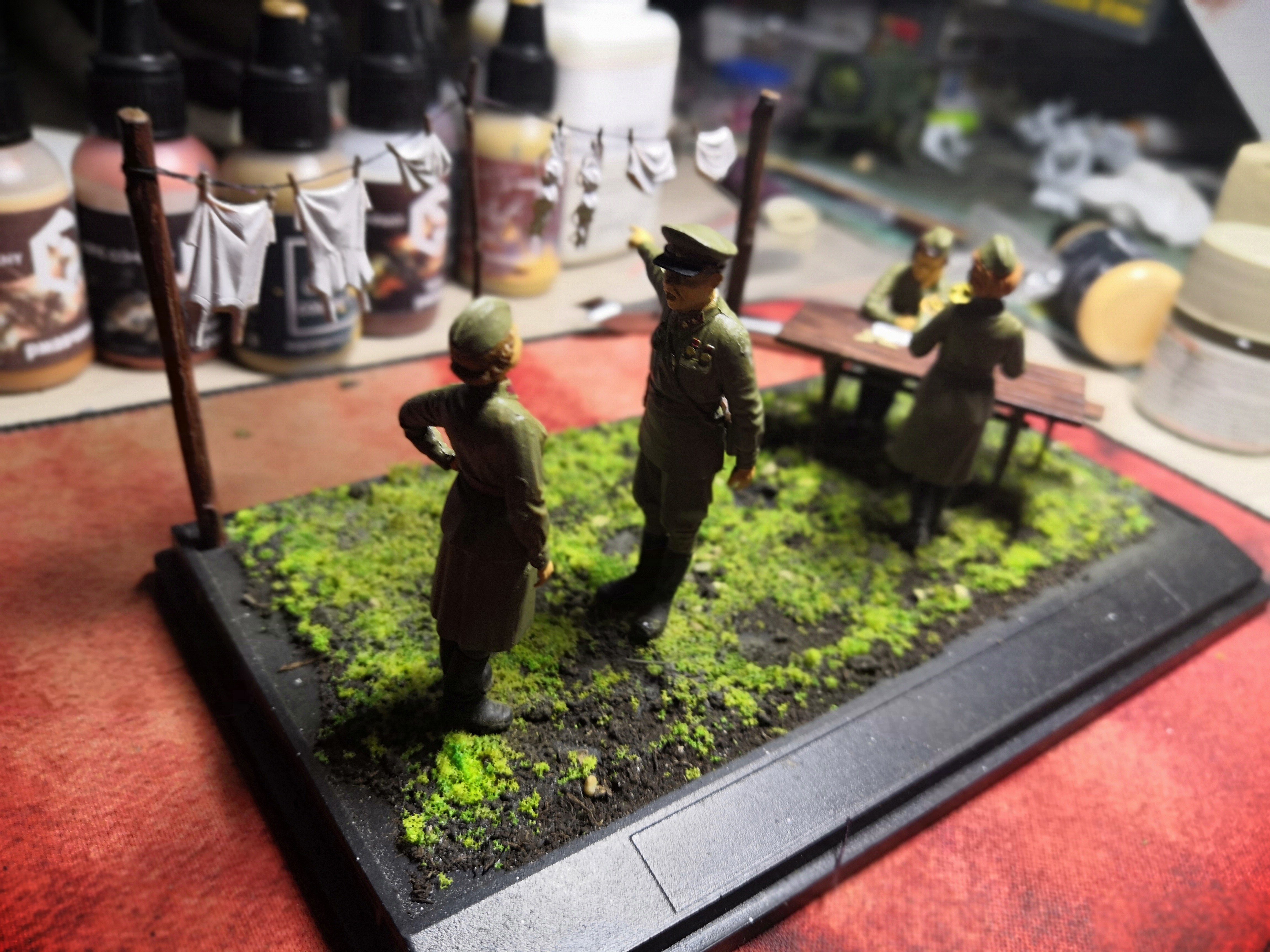
In this article, we talk about our talented colleagues. Who are they — our #leverxpeople?
Evgeniy Novoseltsev — He Knows How to Breathe Life Into Miniatures
Imagine that you are back in your childhood for a while. Which toy would be in your hands? A toy car? A teddy bear? Or a set of tin soldiers you've been arranging for hours to stage an epic battle?
And do you know that not only children's imagination can breathe life into these simple figures? That is precisely what Evgeniy Novoseltsev does. Read our interview to find out about our colleague's hobby and reasons why everyone should try this activity.
Evgeniy, you like decorating miniatures. When did you get interested in it?
— I got interested in this activity in my childhood, but it turned into my hobby about five years ago. Three years ago, I did my first large-scale work for the tenth anniversary of the motorcycle club I belong to.
It sounds cool! What did you create?
— It was a composition dedicated to the Great Patriotic War because our moto club is military-patriotic. I bought models of tanks, soldiers, and civilians, then colored them, and represented the soldiers' everyday life: destroyed tanks, grass and mud, etc.
Please describe the process of painting miniatures.
— It starts with searching for an interesting model set. Then I assemble and glue the parts. You also can remove unnecessary elements. Once I bought a collection of the Great Patriotic War soldiers and wanted to stylize them for 1944-1945. But they had shoulder boards: Soviet soldiers wore them until 1943. I had to remove these shoulder boards, carve collar insignia, and paint them. It also happens with technique and/or other figures. Sometimes, you have to make additional elements from wire or buy additional sets. 
What's the hardest thing about your hobby?
— Small-scale decorating requires accurate transmission of all facial features, clothing accessories, and other elements. Otherwise, you can't consider the miniature without looking at it from different angles. And I like to paint my miniatures so that a person wants to view them from all sides.
What do you paint your miniatures with?
— It depends on the model. Sometimes, it's more convenient to paint with an airbrush, sometimes with paintbrushes.
What size are your miniatures?
— The most common scale is 1:32. For example, toy soldiers we have played with are usually of this size. But I also color "bigger" miniatures. My largest work is at the 1:8 scale.

Do you prefer only military-themed miniatures?
— Recently, I've decided to change the line. You can find such miniatures in any store.
Now I'm into fantasy, anime, and cyberpunk miniatures. It's a real challenge to find them, and a real pleasure, indeed.
This genre implies the creation of different characters, and drawing a human body is challenging. The skin color alone says a lot. I have 16 paint tubes of varying skin tones. But I like playing with shadows, making my models more volumetric. That is why I have chosen this genre.
It seems that only a patient person would succeed in this hobby. Do you get angry when something goes wrong?
— Yes, sometimes, it happens. I have worked on a fantasy miniature called Mother Cthulhu and repainted it about 15 times. It is still not finished: I didn't like something all the time. I hope I will ever get it finished.
How long does it take to create one miniature?
— It depends on the miniature. I worked on one of my last miniatures for six weeks, 2-4 hours daily. 
How did you get interested in miniatures?
— It impressed me with how an ordinary gray figure turns into life-like. I also like imagining what emotions a composition of miniatures can evoke. It primarily applies to military-historical themes.
For example, I have created a composition with girls washing and hanging clothes on a clothesline while an armored personnel carrier is passing by. You look at this composition and feel its story and atmosphere.
I like when people find details in such miniatures and note something for themselves: someone pays attention to a smoking soldier deep in his thoughts and notices a samovar in the bushes where the tea is brewed.
I relax while working on the miniatures.
Did you learn to draw by yourself?
— Yes, I went to art school for three years in my childhood. I always liked drawing. Before I got into miniatures and 3D painting, I had created a lot of 2D images: airbrushing for my motorcycle and drawing scenes for our motorcycle club.
Do you remember your first miniature?
— My grandfather bought me a model of a Soviet destroyer in the artillery museum when I was a kid. It was the first miniature I painted, and I still keep it.
Which is more challenging: working with tiny or bigger models?
— With bigger ones. The larger the scale, the greater the chance that someone will notice your mistakes, and the harder it's to draw. Painting small figures is patient labor, but when working on big models, it's more challenging to convey the person's appearance, wrinkles, and facial features.
Do you create custom miniatures?
— No, I don't see the point of it. It takes a lot of time to do something professionally. Unfortunately, I don't have an opportunity to create custom miniatures. I do it to relax. But I give some of my work to family members, friends, and colleagues in the office.
Is there a miniature you dream of?
— It is a 9 cm bust with a wolf's head and a fantasy-styled girl with a PPSh standing next to it. It's a mixture of fantasy and the USSR themes.
What advice would you give those who want to start working with miniatures?
— Firstly, just try! It helps you relax and learns to see the beauty in little things. Secondly, start with the cheapest set of miniatures bundled with paints. Military equipment is the best choice, as it is easy to work with it. Buy a cheap primer, assemble the miniature, and paint it.
Finally, you can find a similar figure on the Internet and compare it with yours to understand what you have done right or wrong.


